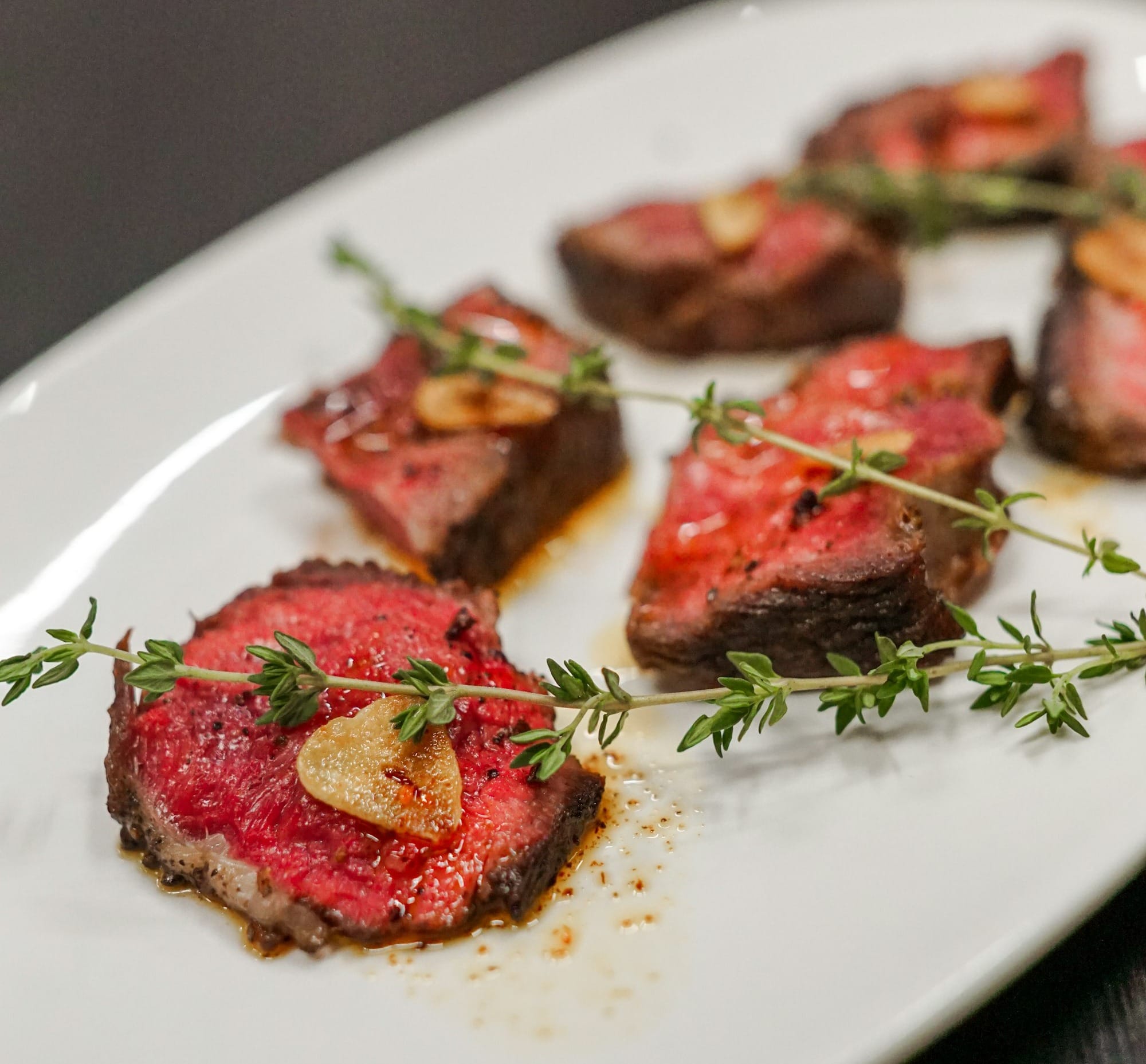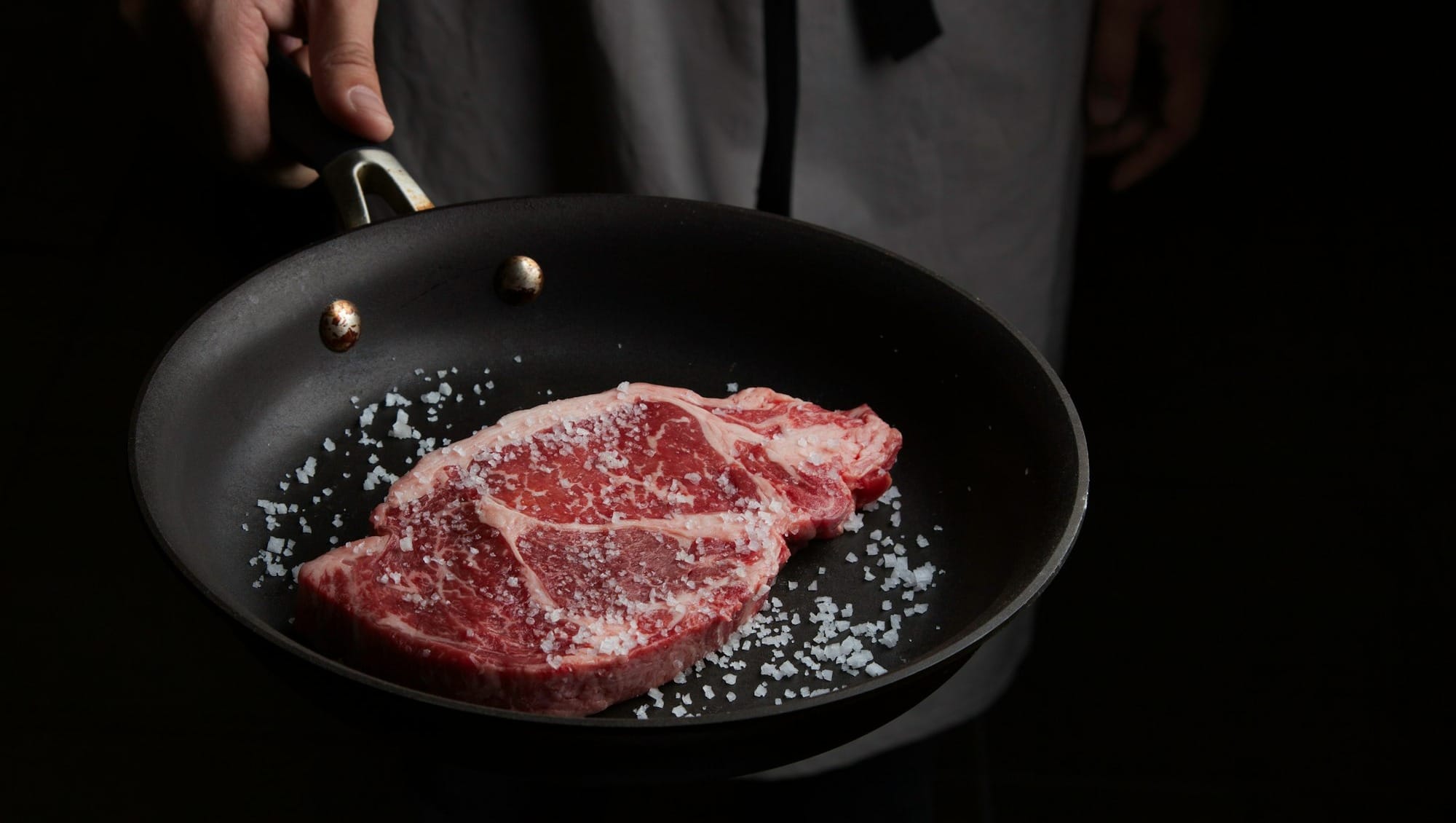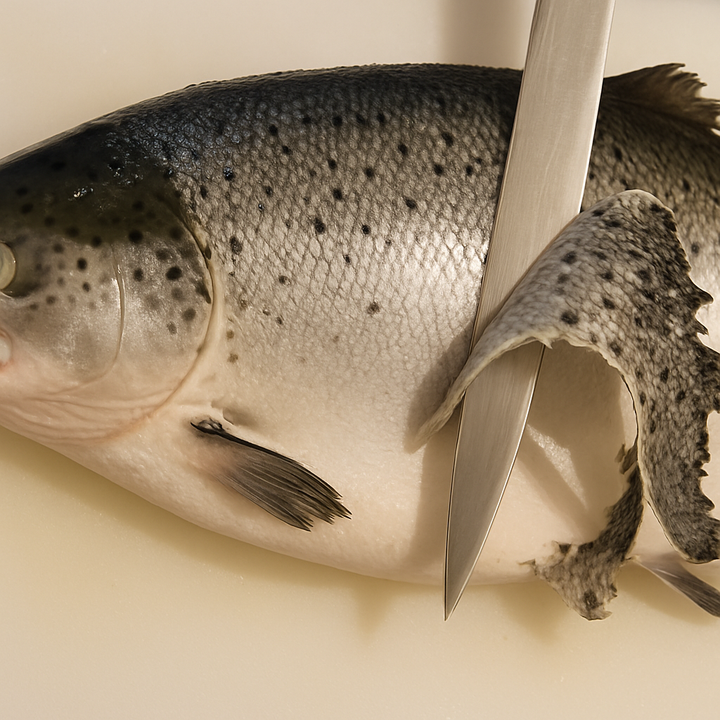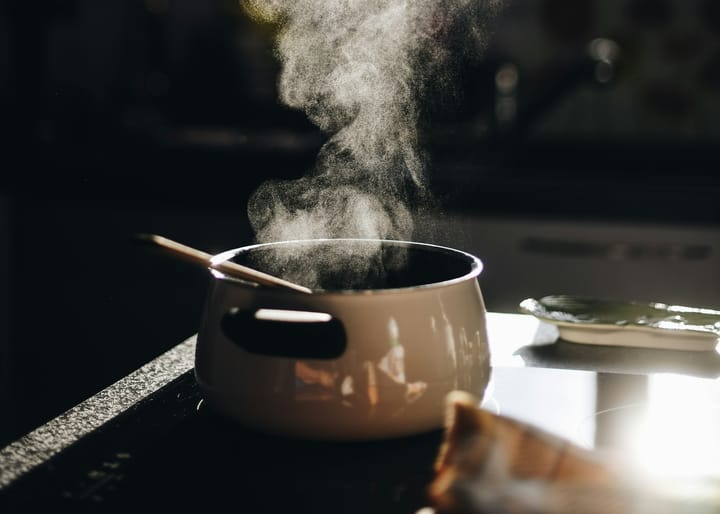The Ultimate Guide to Seasoning Premium Wagyu Steaks
Seasoning premium wagyu is an art of restraint and precision. The finest salt, freshly cracked pepper, and carefully selected herbs don't mask the beef's natural perfection—they elevate it to transcendent heights.

When faced with a cut of premium beef—particularly the revered wagyu with its snowflake-like marbling and buttery tenderness—even seasoned chefs pause with reverence.
How does one enhance perfection? The answer lies in understanding not just which seasonings to use, but when, how, and most importantly, why.
This comprehensive exploration will take you beyond basic advice into the science, culture, and artistry behind seasoning extraordinary beef.
Why Seasoning Matters
Premium beef, especially Japanese wagyu and its American or Australian counterparts, represents the pinnacle of meat production.
These cattle enjoy specialized diets, exceptional care, and genetics refined over generations to produce meat with extraordinary fat distribution, tenderness, and flavor compounds.
The intramuscular fat in wagyu melts at a lower temperature than conventional beef fat (around 77°F compared to 95°F), creating that signature melt-in-your-mouth experience.
This unique characteristic influences our entire approach to seasoning, as these cuts respond differently to various ingredients and techniques.
The Foundation: Salt—More Complex Than You Think
Salt isn't merely a flavor enhancer; it's a transformative agent that fundamentally changes the meat's protein structure. When applied to premium beef, salt:
- Dissolves in surface moisture to form a brine that penetrates the meat
- Denatures proteins, allowing them to retain more moisture during cooking
- Creates electrical charges that help break down tough muscle fibers
- Enhances our perception of the meat's natural flavors
Types of Salt and Their Applications:

Kosher Salt: The preferred choice for most professional chefs when cooking premium steaks. Its larger, flaky crystals distribute more evenly and dissolve at an ideal rate for proper protein interaction. Diamond Crystal brand has become the gold standard in high-end steakhouses for its consistency and clean flavor.
Fleur de Sel: These delicate "flower of salt" crystals harvested from coastal seawater evaporation ponds contain trace minerals that add subtle complexity. Reserve this premium salt for finishing just before serving, where its textural crunch and mineral notes can truly shine.
Himalayan Pink Salt: While visually striking, its mineral content (particularly iron oxide) introduces subtle flavor notes that can complement the earthier aspects of dry-aged premium beef, though purists might find it distracting with the cleanest-tasting wagyu.
Timing is Everything: For cuts thicker than 1.5 inches, consider pre-salting 40 minutes before cooking. This allows the initial moisture draw to be reabsorbed, creating a perfectly seasoned interior. For thinner premium cuts, salt immediately before cooking to prevent moisture loss during the critical "middle period" when salt has drawn moisture out but hasn't yet been reabsorbed.
The Counterpoint: Pepper's Complex Chemistry

Freshly cracked black pepper contains over 100 distinct flavor compounds, including piperines (responsible for heat) and volatile oils that create its distinctive aroma. When pairing pepper with premium beef:
Grind Size Matters: Coarsely ground pepper provides bursts of complexity and textural interest, while finely ground pepper distributes more evenly but can become bitter when exposed to high heat.
Consider Toasting: Briefly toasting whole peppercorns before grinding wakes up their essential oils, creating deeper aromatic qualities that better penetrate the meat's fat.
Experiment with Varieties:
- Tellicherry: The most complex and aromatic, with fruity, floral notes
- Malabar: More straightforward pungency with clean heat
- White Pepper: Offers fermented subtlety that can complement the umami aspects of long-aged beef
- Szechuan Peppercorns: Not true pepper but provides tingling, citrusy notes that create fascinating contrasts with rich beef (use extremely sparingly)
Herbs: Nature's Aromatic Symphony
The right herbs can form a harmonious relationship with premium beef, enhancing rather than masking its inherent qualities:
Rosemary: Contains aromatic compounds like pinene and cineole that stand up to rich beef fat. Rather than chopping, which releases bitter compounds, use whole sprigs during cooking and remove before serving. The gentle infusion creates an aromatic halo around the meat without overwhelming it.
Thyme: Contains thymol, a compound that enhances umami perception. Fresh thyme provides bright, slightly floral notes while dried thyme offers concentrated earthiness. For wagyu, French varieties like lemon thyme create interesting high notes that cut through richness.

Bay Leaf: Often overlooked for steaks, bay contains eugenol and myrcene that add subtle depth. Crush dried leaves into powder for rubs or use fresh leaves in finishing butter to add complexity without overpowering.
Tarragon: The anise-like compounds in French tarragon (particularly estragole) create unexpected but harmonious flavor bridges with wagyu's sweet fat. Consider infusing into butter rather than direct application.
The Umami Enhancers: Ingredients That Amplify Savoriness
Premium beef already contains significant natural umami, but certain ingredients can elevate this quality to extraordinary levels:
Aged Garlic: Fresh garlic can overwhelm wagyu's subtle notes, but black garlic (aged until soft and sweet) contains concentrated melanoidins that enhance meatiness without sharp pungency.
Mushroom Powder: Dried porcini or shiitake mushrooms ground to a fine powder contain natural glutamates and guanylates that amplify beef's umami characteristics. A light dusting before cooking creates remarkable depth.
Kombu Dust: This dried seaweed, central to Japanese cuisine, contains the highest natural concentration of glutamates. When dried further and ground to powder, a microscopic sprinkle before cooking introduces umami complexity without fishiness.
Aged Soy Products: Traditional aged soy sauce, tamari, or garum can be reduced to a syrup and carefully applied as a finishing touch, introducing complex fermented notes that harmonize with beef's natural flavors.
Cultural Approaches: How Different Traditions Honor Premium Beef
Japanese Minimalism
The traditional Japanese approach to wagyu celebrates the meat's intrinsic qualities:
Salt Focus: Often using only the finest sea salt, applied moments before cooking on hot stones (ishiyaki) or special grills.

Complementary Pairings: Rather than complex seasoning, Japanese chefs might serve wagyu with:
- Fresh wasabi root (not paste), grated moments before serving
- Sudachi or yuzu (Japanese citrus) to cut through richness
- Freshly grated daikon radish with ponzu for acidity contrast
The Art of Simplicity: This approach acknowledges that with truly exceptional beef, the chef's highest purpose is to reveal its inherent qualities rather than impose new ones.
French Classical Tradition

French cuisine approaches premium beef with techniques refined over centuries:
Compound Butters: Often finishing with beurre composé containing herbs like chervil and tarragon along with shallots and perhaps cognac.
Sauce Construction: Building sauces from the meat's own juices enhanced with reduced wines, demi-glace, and carefully selected aromatics.
Aging Emphasis: The French tradition places high value on properly aged beef, often considering that process itself a form of seasoning, as enzymatic breakdown creates new flavor compounds.
Advanced Techniques: Breaking Tradition with Purpose
For those willing to experiment, some contemporary approaches are yielding remarkable results with premium beef:
Coffee Rubs: Freshly ground, single-origin coffee can create complex bitter notes that balance wagyu's richness. The aromatic compounds in coffee (over 1,000 identified) create fascinating flavor bridges with beef's own complexity.
Smoked Salt Finishing: Cold-smoking premium salt over specific woods (cherry, apple, maple) creates gentle aromatic notes that don't overwhelm the meat.
Aging in Fat: Some innovative chefs are aging premium beef portions in rendered beef fat infused with herbs, creating profound flavor penetration without relying on surface seasoning.
Charcoal Infusion: Activated charcoal or Japanese binchotan charcoal powder can be incorporated into salt rubs, adding subtle smoke notes and striking visual contrast against the marbled meat.
The Science of Application: How and When to Season
The physical process of seasoning is as important as the ingredients themselves:
Temperature Gradient: Always bring steak to room temperature (about 30 minutes) before seasoning. This ensures even seasoning adherence and prevents temperature shock during cooking.
Application Pressure: Press seasonings firmly but gently into the meat's surface. This ensures adhesion without compressing the meat's delicate structure.
Oil Considerations: For high-heat cooking methods, a light brush of high-smoke-point oil (such as avocado or refined grapeseed) helps seasonings adhere while promoting proper Maillard reaction. For wagyu, this is often unnecessary due to its high fat content.
Resting Phase Chemistry: The most overlooked aspect of seasoning happens during the critical resting period after cooking. During this time, salt continues to penetrate as moisture redistributes, and volatile compounds from herbs and spices are absorbed into the cooling fat. Covering the meat loosely with foil creates a flavor chamber that enhances this effect.

Pairing Principles: Complementing Your Perfectly Seasoned Steak
The perfect seasoning approach extends to what accompanies your premium steak:
Wine Considerations: Tannic red wines like Cabernet Sauvignon create astringency that cuts through fat, while the vanilla and oak notes complement caramelized meat flavors. For heavily marbled wagyu, consider unconventional pairings like aged sake or even whisky, which can stand up to the intensity.
Vegetable Accompaniments: The slight bitterness of simply prepared dark greens (spinach, kale, broccoli rabe) creates palate-cleansing contrast, while mushrooms complement the meat's umami characteristics.
Starch Selection: Rather than heavy potatoes, consider using wild rice or barley, whose nuttiness and slight chew provide textural contrast without overwhelming.
Final Thoughts: The Philosophy of Premium Beef Preparation
Seasoning premium steak is a delicate balance between respect and enhancement. The chef's art lies not in adding complexity, but in carefully elevating what nature has perfected.
With extraordinary ingredients like wagyu, you serve as a steward—guiding the meat to its fullest expression through thoughtful restraint and technical precision.
The true measure of success is how seamlessly your contribution honors both the exceptional ingredient and the diner's experience.


